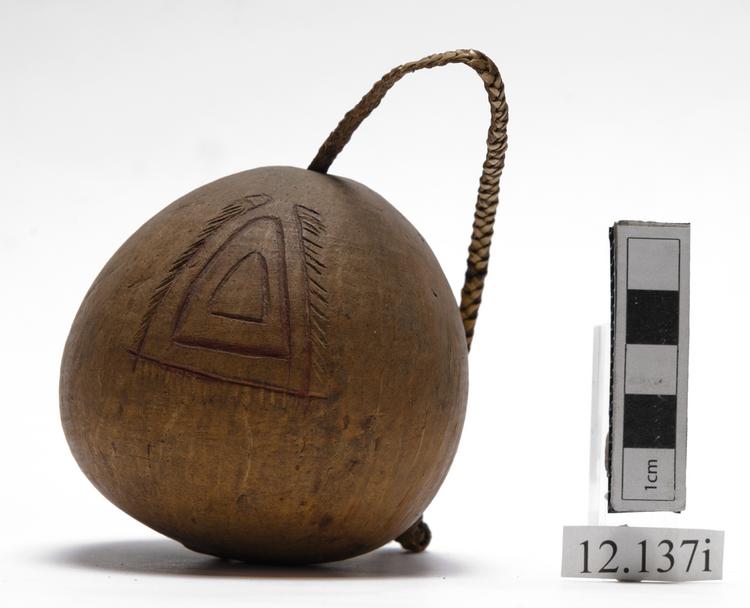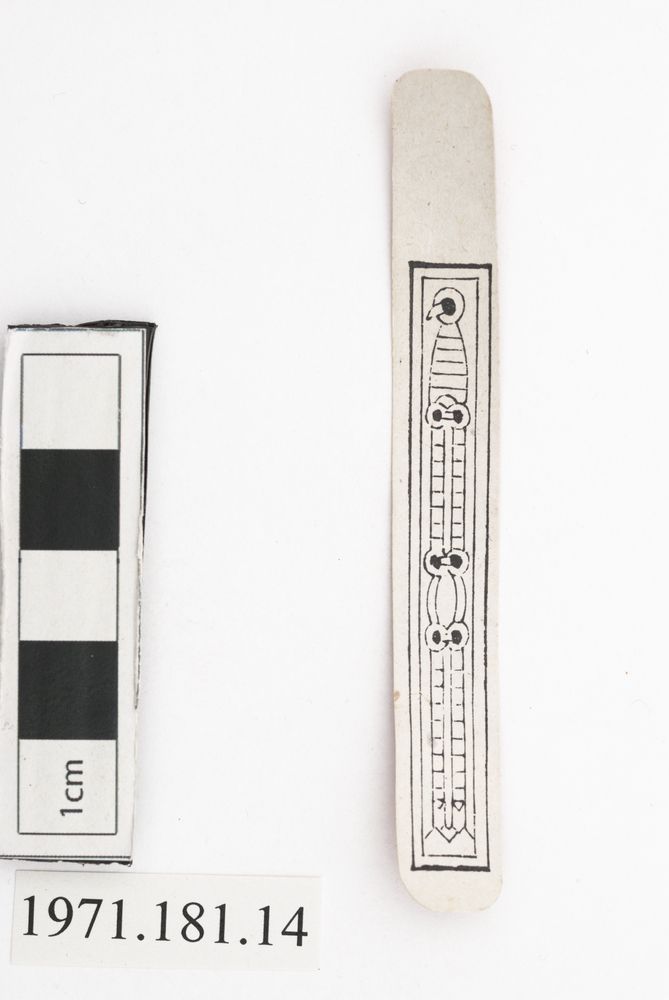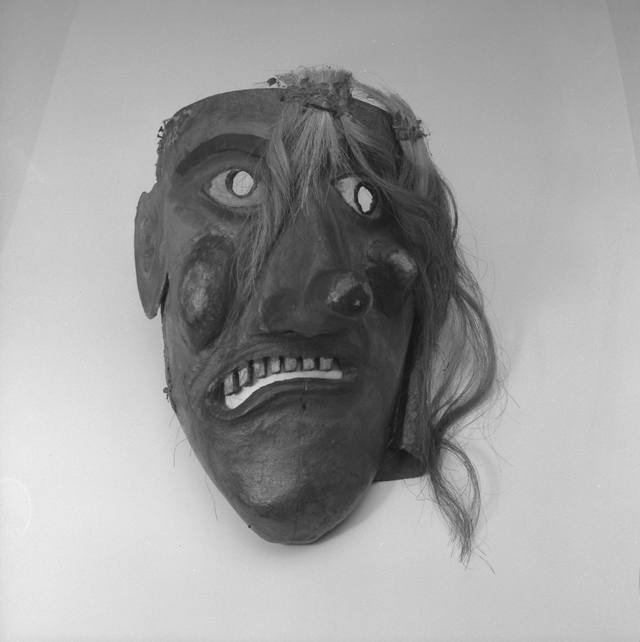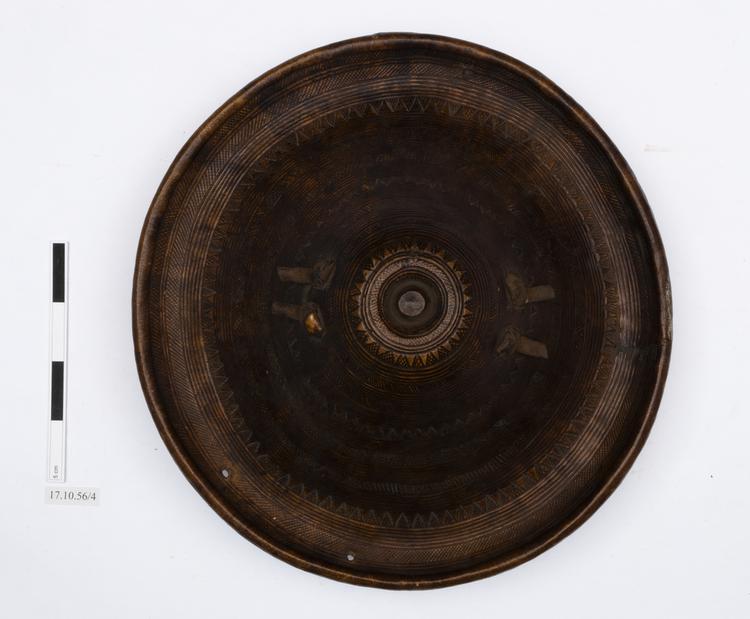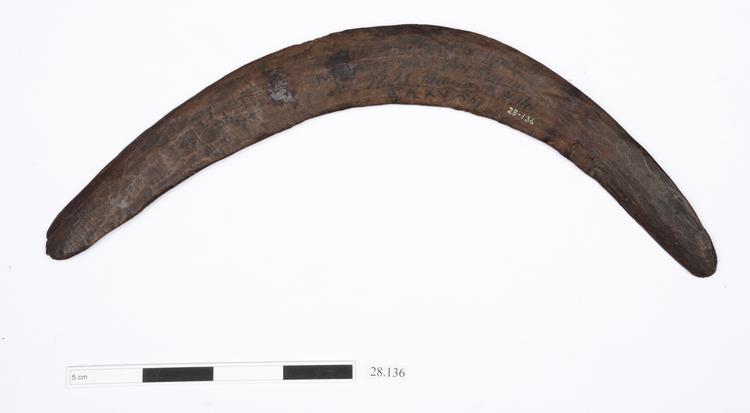
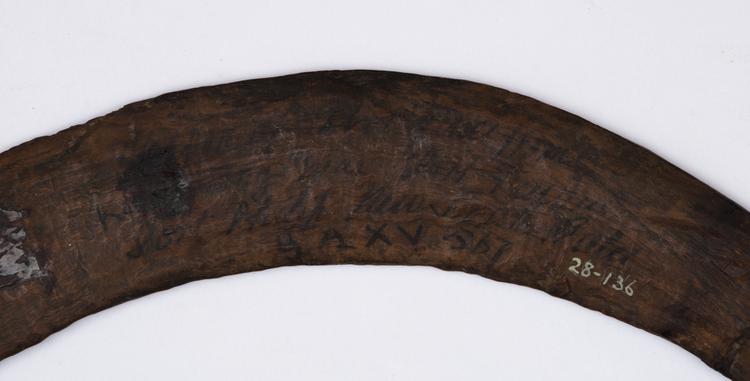
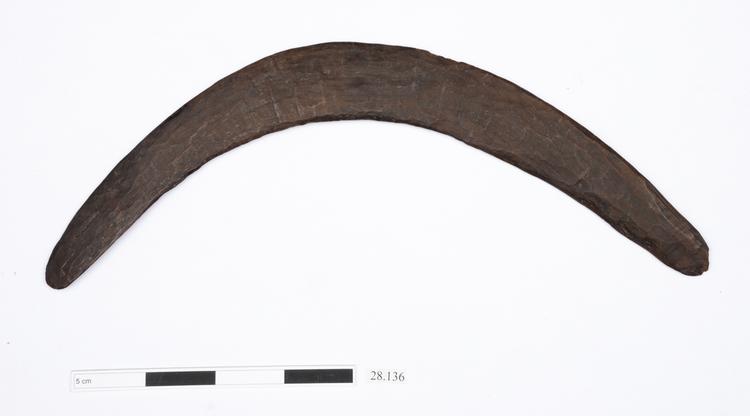
Large, thin boomerang made from dark brown, aged-looking wood. One side left plain with some signs of wear. Other side has 4 lines of black handwritten text along centre. To right of this, shallow, less visible capital 'D' carved into wood, next to another similar carving (possibly 'L'): both appear to have been scratched through, rendering the latter illegible. To left/slightly covering and obstructing central lines of text are two patches of shiny, darker residue likely from adhesive.
Returning Boomerang, Kirrae People, Port Fairy, Victoria, Australia According to an inscription on it, this boomerang was collected at some time between 1830 and 1850 near Kirrae Wuurong to the northwest of Port Fairy, in what is now the State of Victoria. It is, therefore, a fine example of an Aboriginal Australian returning boomerang carved with stone tools. This is interesting, because the consumer demands of foreigners fascinated by these remarkable objects began to change their style very rapidly. It is often believed that all boomerangs were weapons for hunting or warfare, but returning boomerangs such as this were purely recreational playthings for adult men. A number of throwing, catching, passing and avoiding games were played throughout the Australian continent, for solitary men and men in groups. Wood. Circa 1840. Formerly in the private collection of Major S. S. Flower, MD.
fighting



